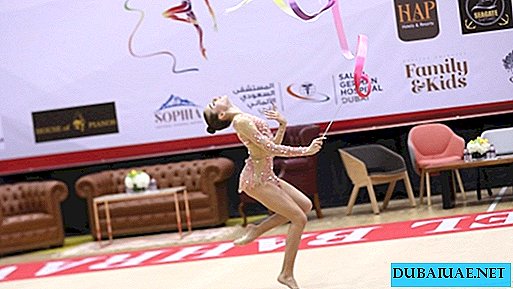TOGETHER WITH THE GROWING POPULARITY OF A COMPLEX CLOCK MECHANISM, THE MASTERS OPEN ALL NEW WAYS TO DECORATE THE DIAL. IT SEEMS THAT EACH YEAR ARTISTS INVENT SOMETHING UNEXPECTED, READY TO ATTACK OUR IMAGINATION WITH A CHOICE OF MATERIALS AND FILIGRAPHY OF TECHNIQUE. FOR THEREFORE, MOST OF THESE TECHNICIANS ARE ALREADY GOOD KNOWN. SIMPLY BEFORE THEY DECORATED NOT THE DIGITS, AND THE COVER OF THE POCKET HOURS, AND THEREFORE, THEY WERE BEFORE DEPARTED ON THE BORDER OF FORGOTTEN.
Grisaille
If enamel techniques such as Grand Feu, Champleve and Cloisonne were known to mankind from time immemorial and were never particularly forgotten, then a real revolution in the history of these techniques took place in the 15th century in French Limoges, where masters proposed to apply powder with oxides on an already coated enamel primer. It became possible to simply draw with a brush without preliminary contours in the metal. So a miniature on enamel was born. Today, craftsmen who know how to work in this technique are almost more famous than the most famous watchmakers - for example, Anita Porsche, who created the majority of Patek Philippe collection dials and collaborates with some houses. One of the rarest and most beautiful Limoges techniques is Grisaille, reminiscent of painting "in the negative." White enamel is applied layer by layer to a dark background (silicon oxide), creating the finest tonal transitions, which makes the image look voluminous. So, to create a limited series of Vacheron Conastantin Metiers d'Art Hommage a l'Art de la Danse, the masters of the Geneva manufactory needed to apply 12 layers with firing at a temperature of 1200 degrees.
Turquoise
Enamel is the closest relative of glass and porcelain obtained by mixing crystals of silicon, borax and magnesium. By adding oxides of various metals, it can be painted in bright colors, and when heated, the enamel melts like glass. This is exactly how the technique of enamel decoration Grand Feu (or "big flame", in Russia was known as enamel) arose in antiquity, which at first was very similar to jewelry inlay. Among the masters of Ancient Egypt, India and China, a mixture of magnesium and cobalt, heated to a temperature of 1200 degrees, which after solidification turned into a shimmering homogeneous material of a deep blue color, was especially popular.
Subsequently, in Byzantium, its own variety of Grand Feu appeared, but instead of dark blue it was bright blue, and this type of enamel was called Turquoise. The secret of pure turquoise was appreciated by goldsmiths. The legendary Bulgari was the first to launch the Serpent Watch in 1965, completely covered with a Turkuaz and equipped with the world's smallest Jaeger-LeCoultre caliber. And this year, bright turquoise Turquoise enamel flowers adorned the romantic dial of a unique model from the Attrapemoi ... si tu m'aimes collection by Chaumet.
Etruscan granulation
On the basement floor of the Louvre Museum in the Etruscan hall or in the National Museum of the Etruscans "Villa Giulia" in Rome, you can see many magnificent jewelry and even household items decorated with granulation, or "grain" - a pattern of multi-colored gold balls. This technique was known in ancient Egypt, but the Etruscans achieved special skill in it. For a long time, it was really considered lost, until in the 19th century some Florentine jewelry ateliers revived it.
Gold granules proved to be the perfect decoration for pocket watch covers: in the Geneva boutique Vacheron Constantin you can see a luxurious model of the time where granulation is combined with colored enamel and precious stones. And when the Cartier house decided to release the first modern watches in this technique, the craftsmen did not have to decipher the Etruscan tablets - it was enough to turn to the archives of a hundred years ago. In the Rotonde de Cartier Panthere Granulation, the dial of the 42 mm gold case is manually decorated with beads of different sizes from 22 carat gold, which together form the image of the Panther - the totem symbol of Cartier.
Florentine mosaic
In the XVII century, jewelers from Florence discovered a completely new way of inlaying: instead of inserting even faceted minerals into the corresponding geometric grooves, they began to follow the natural shape of the stones, "collecting" whole pictures from them. As it usually happens, the “be natural” principle turned into a complex and laborious work. The natural properties of minerals acted as pictorial means: tint and color transitions, inclusions, streaks and even cracks.
The main material for creating Florentine mosaics became semiprecious, mainly the so-called "hard" stones, for example, rock crystal, quartz and various types of marble. Obviously, such decorative technique is more suitable for decorating large objects, for example, sashes of interior watches, but in recent years, artists in search of new fine tools have managed to adapt miniature "puzzles" made of precious stones to wrist dials.
Van Cleef & Arpels used grisaille to paint the dials of the 2014 Midnight Nuit Boreale and Midnight Nuit Australe dials on celestial maps of the Northern and Southern Hemispheres
Russian master, AHCI Academy member Konstantin Chaykin created the Levitas watch line, where a transparent crescent-shaped dial is framed by a Florentine pattern of jade, malachite, opal and lapis lazuli. And Harry Winston in this year’s collection Avenue C Precious Marquetry instead of stones used pieces of nacre different in color and texture
Mother of pearl painting
As you know, the collection of the Chinese imperial court, until it was stolen during the Kuomintang wars, included hundreds of hours, boxes and snuff boxes with enamel and pearl miniatures. The principle of applying a pattern to mother-of-pearl is partially similar to enamel: the same point-like multilayer background and the gradual introduction of shades - however, it is more complicated and time-consuming because the shell structure is very fragile and tends to delaminate during firing. Any incorrect movement or inaccuracy in calculations when creating a pearly miniature can lead to the death of all work. For example, Andre Martinez, the chief modern specialist in mother-of-pearl painting, needs 250 hours to create a sketch on the surface of the dial. In this case, the master does not come off the microscope.
The process of creating a miniature on enamel takes eight long and laborious stages, for example, for the manufacture of the model Bovet Amadeo Fleurier 43 Year of the Horse, dedicated to the year of the Horse.
Mother of pearl bas-reliefs
"Mother of Pearls," as the name mother of pearl is translated from many languages, is considered one of the oldest decorative natural materials. In ancient Rome, mother of pearl was a symbol of power and wisdom; talismans were made from it, because they believed that it brings good luck. Mother of pearl has one significant drawback - it is quite fragile. Therefore, carved bas-reliefs of this thin and layered material required great attention and art, which the Chinese craftsmen were especially famous for. Modern watch artists turned to their experience.
Since the time of the Four Seasons collection, Van Cleef & Arpels noted that a carved mother-of-pearl disk, floating above an enamel pattern, gives the whole composition airiness and sophistication. This technique was also used in the 2014 collection of Lady Arpels Zodiac, in which 12 models represent all the signs of the zodiac. The collection is divided into four elements according to the color scheme, and in each of them there are overhead volumetric elements made of carved mother of pearl, depicting clouds, waves, leaves or tongues of flame.
Creating a Bulgari Bulgari Tourbillon Il Giardino Tropicale model combining mother of pearl with cloisonne enamel and inlay required titanic work
Lace
The art of lesage - lace weaving - is incredibly diverse. In the Middle Ages, almost every region of Europe had its own original weaving technique (famous Brussels and Flemish lace, Irish tutting, convex Venetian lace, tatting and so on). It is impossible to imagine high fashion without lace, and it is not surprising that Chanel found a way to bring this airy art to watch collections. This year's new line features two unique Mademoiselle Prive Decor Camelia Brode models. Camellias of gold threads, pearls and gold sequins adorn both dials created by the masters of the Lesage studio. Each of the models is presented in a single copy.
Marqueterie
Wooden mosaic, or "marquetry", reached its peak in France, in the XVII century - in the era of classicism. This original technique of drawing from thin slivers, differing in color and texture (in fact, like a Florentine mosaic for wood), was very popular for decorating furniture. In modern watchmaking, the word Marqueterie has become customary to mean almost any mosaic (apparently because it sounds unusual), but historically it is about decorating the dial with a wooden pattern. Today's leaders in sliver painting are Patek Philippe and Cartier. In 2011, the First House released a limited edition Tiger Marquetry, and a year later developed the idea by launching the Calatrava Rabbit watch. For Cartier, the dials depicting a lion, a bear and a panda were created by the artist Jerome Butteson. Hermes House was not captivated by animal motifs and limited itself to the Arceau Marqueterie de Paille model with a parquet-inspired dial. Passion for the wooden mosaic of marquetry was not spared by Michel Parmigiani.
P.S. Plumasserie
Two years ago, a collector who visited an exhibition in Basel after a long break exclaimed in bewilderment: “Why now everyone adorns the dials with feathers? Have they really run out of diamonds ?!”. Diamonds, of course, are eternal, but recently it turned out that jewelry made from the most fragile and biodegradable materials - feathers, flower petals (Cartier) and butterfly wings (ArtyA) has become increasingly popular.
The art of Plumasserie, or weaving peacock feathers, was very popular in the 19th century, but went out of fashion with crinolines. Today it is owned by a few units. The first was Parisian artist Nelly Saunier, who in 2012 created dials for the Harry Winston Feathers collection. Dior introduced the feather-decorated rotor in the VIII Grand Bal Plume collection, and this year the Corum brand introduced the Feather Watch with a peacock feather dial. Apparently, in a combination of solid gold and ephemeral feathers, the metaphor of elusive time is most clearly revealed.
Two years ago, a collector who visited an exhibition in Basel after a long break exclaimed in bewilderment: “Why now everyone adorns the dials with feathers? Have they really run out of diamonds ?!”









